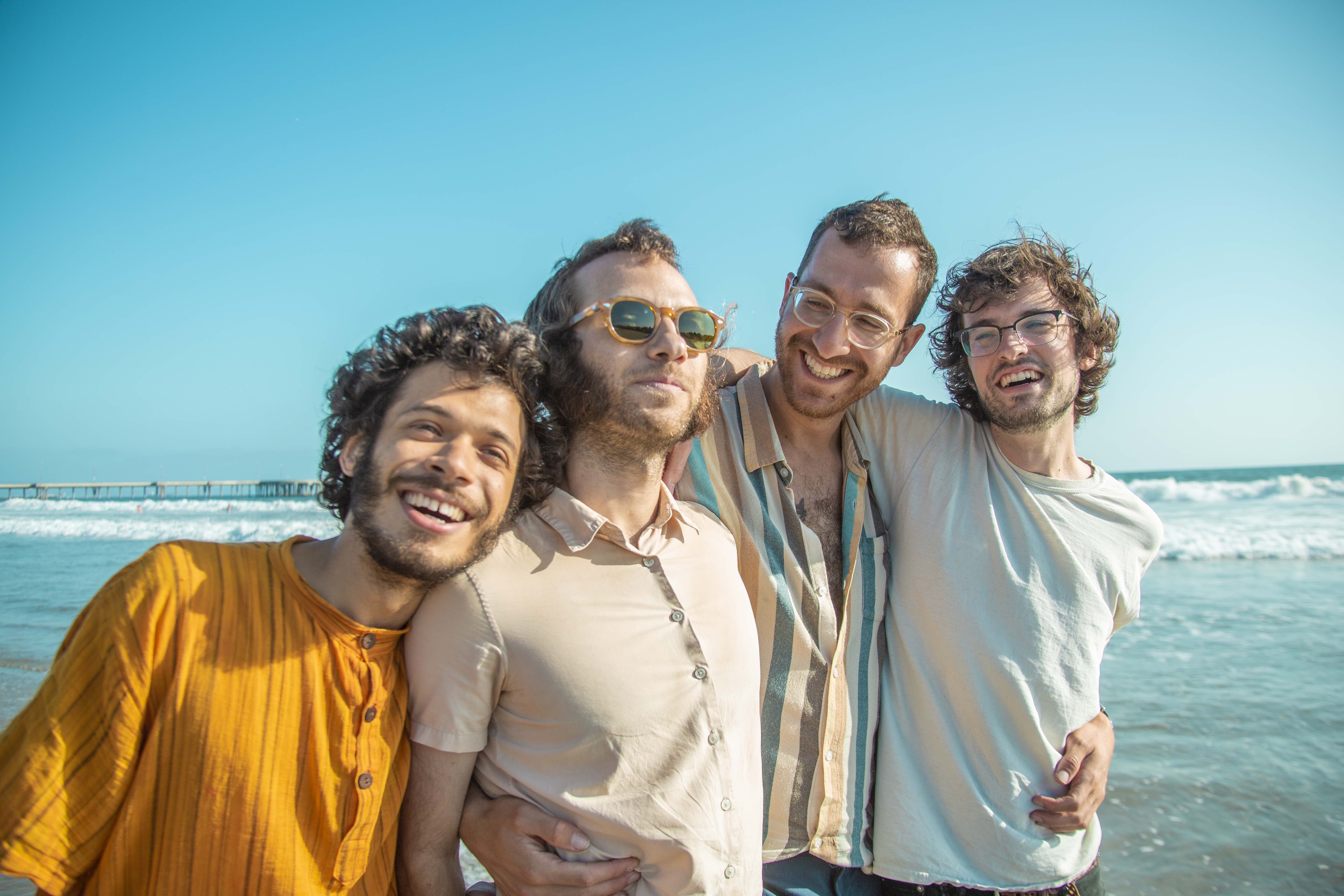There are several moments of blissful climax on the new Young Jesus album, where you can imagine each member of the LA quartet briefly locking eyes with one another in the studio and trading affirmative smirks. One of these arrives halfway through the song “Bell,” just as guitarist/vocalist John Rossiter finishes a tense, ragged verse about recognizing the inextricable nature of beauty and pain. His voice cuts out and the band synchronistically pauses for a second, as if to take one last gulping breath before plunging forward into a tumbling breakdown.
That specific instance of harmony sounds intentional, but then the song quickly dissolves, each member breaking off from the whole and roaming to separate corners of the room to improvise. Eventually, they meander back to meet in the middle, share what they’ve created, and drop back out one by one until all that remains is the languid toll of Rossiter’s clangy, bell-like guitar strokes. This succession of maintaining, losing, and regaining their footing is what Young Jesus strive for on The Whole Thing Is Just There, their fourth album—and second for Saddle Creek.
“The artists that we tend to admire are willing to document their successes and their failures on record,” Rossiter says, sitting with drummer Kern Haug and bassist Marcel Borbon. “They have a body of work that shows a complete human, interested in investigating life and its complexities. Which is both joyful and banal, difficult and easy. The whole spectrum of emotions.”
Young Jesus first introduced this warts-and-all approach on their epic, if at times exhausting, 2017 album S/T, which established the band’s new sonic direction and reintroduced them under a fresh lineup. (Rossiter enlisted Haug, Borbon, and keyboardist Eric Shevrin upon moving from Chicago to LA.) Unlike the emo revivalism of their early releases, S/T sounds like a swirl of post-rock, neo-jazz, experimental, and traditional Northwest indie rock. Since the band was still undergoing the “messy process” of learning how to incorporate everyone’s ideas fairly, the songs on that record either click beautifully or verge on listlessness. The Whole Thing Is Just There, recorded in just one week after three months of writing, is a more successful go at what they were trying for on S/T: making music that extends beyond both the prism of indie rock and the restrictive confines of what constitutes a band.
“We felt like we were in one of these wide-eyed, excited spaces where ideas are coming really quickly,” Rossiter says. “The difference is that with [The Whole Thing] we in some ways let go of what we wanted. You learn to let go of your intentionality and let the process guide what the finished product will be.”
“It’s very important to us to sort of convey the idea that music doesn’t exist in a vacuum. It’s not just about a song—it’s about a life.”
— John Rossiter
This is a group of people who are as interested in philosophy, visual art, fiction writing, and nature as they are in music—and they view art as wholly intersectional with the other aspects of their lives.
“Your musical life is not detached from your daily life, or your interest in visual art,” Rossiter says. “Ideally, for me at least, they should feed one another… I think it’s very important to us to sort of convey the idea that music doesn’t exist in a vacuum. It’s not just about a song—it’s about a life.”
Improvisation is the mode they use to introduce those extra-musical influences. Large portions of the record, including fifteen minutes of the twenty-minute closing track “Gulf,” were entirely ad-libbed in the studio.
“I think music is this technique to express other ideas that are beyond musical ideas,” Haug says. “Especially when improvising, you’re not necessarily thinking actively or consciously about the aesthetics of the music, but you’re expressing the train of thought that’s going on underneath.”
Rossiter, who was initiated into improvisation by Borbon and Haug, believes that sort of expression is powerful enough to speak to, and even aid, our generation’s cultural anxiety. “Right now we’re at a place where, well, life should be enjoyable. But we still don’t feel good,” he says. “And I think there’s a huge, huge opportunity in live music. Specifically improvised music, because it embraces those mistakes and difficult feelings.”
“You’re just incorporating everything, instead of deciding what’s good and bad,” Haug adds.
“You’re just incorporating everything, instead of deciding what’s good and bad.”
— Kern Haug
The band isn’t merely pontificating here—they actually tested this theory back in February at an event called Conceptual Beach, held at LA’s Bootleg Theater. Instead of a standard concert, Young Jesus turned the room into a “musical art gallery,” with different zones where performers and audience members could collaborate creatively. By the end of the night, Young Jesus was on stage improvising with at least four of their musician friends, while people in the crowd made watercolor paintings across the room.
“How can you break down the barrier between indie rock and other types of music?” Rossiter asks. “[By] communicating with other people who play other genres of music and collaborating with them. Listening to their ideas and not thinking that every show has to be a show in the style that you’ve grown up with. After that night, we talked to some people in the audience, and it wasn’t like they were even in the audience. They didn’t feel like they just had to stand somewhere and drink.” FL







